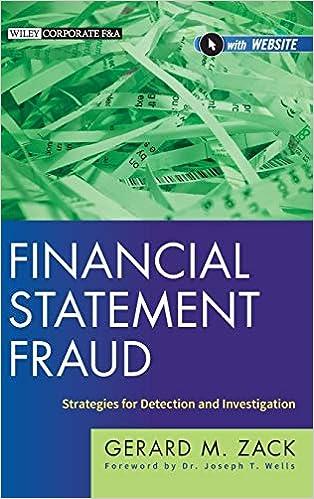Question
Saxon Products, Inc., is investigating the purchase of a robot for use on the companys assembly line. Selected data relating to the robot are provided
| Saxon Products, Inc., is investigating the purchase of a robot for use on the companys assembly line. Selected data relating to the robot are provided below: |
| Cost of the robot | $1,800,000 |
| Installation and software | $680,000 |
| Annual savings in labor costs | ? |
| Annual savings in inventory carrying costs | $300,000 |
| Monthly increase in power and maintenance costs | $3,000 |
| Salvage value in 5 years | $97,000 |
| Useful life | 5 years |
|
| |
| Engineering studies suggest that use of the robot will result in a savings of 20,000 direct labor-hours each year. The labor rate is $9 per hour. Also, the smoother work flow made possible by the use of automation will allow the company to reduce the amount of inventory on hand by $190,000. This inventory reduction will take place at the end of the first year of operation; the released funds will be available for use elsewhere in the company. Saxon Products has a 8% required rate of return. |
| Shelly Martins, the controller, has noted that all of Saxons competitors are automating their plants. She is pessimistic, however, about whether Saxons management will allow it to automate. In preparing the proposal for the robot, she stated to a colleague, Lets just hope that reduced labor and inventory costs can justify the purchase of this automated equipment. Otherwise, well never get it. You know how the president feels about equipment paying for itself out of reduced costs. |
| Click here to view Exhibit 13B-1 and Exhibit 13B-2, to determine the appropriate discount factor(s) using tables. |
| Required: Please Explain and show work. |
| 1. | Determine the annual net cost savings if the robot is purchased. (Do not include the $190,000 inventory reduction or the salvage value in this computation.) |
| 2-a. | Compute the net present value of the proposed investment in the robot. (Any cash outflows should be indicated by a minus sign. Round discount factor(s) to 3 decimal places.) |
| 2-b. | Based on these data, would you recommend that the robot be purchased? | ||||
|
| 3-a. | Assume that the robot is purchased. At the end of the first year, Shelly Martins has found that some items didnt work out as planned. Due to unforeseen problems, software and installation costs were $185,000 more than estimated and direct labor has been reduced by only 9,000 hours per year, rather than by 20,000 hours. Assuming that all other cost data were accurate. Show computations using the net present value format as in (2) above. (Hint: It might be helpful to place yourself back at the beginning of the first year with the new data.) (Any cash outflows should be indicated by a minus sign. Round discount factor(s) to 3 decimal places.) |
| 3-b. | Does it appear that the company made a wise investment? | ||||
|
| 4-a. | Intangible benefits other than cost accruing of new robot and FMS. (You may select more than one answer. ) | ||||||||||||
|
| 4-b. | Based on your analysis in Requirement 3 above, compute for the president the dollar amount of cash inflow that would be needed each year from the benefits in (a) above in order for the equipment to yield a 8% rate of return. (Round discount factor to 3 decimal places.) |
Step by Step Solution
There are 3 Steps involved in it
Step: 1

Get Instant Access to Expert-Tailored Solutions
See step-by-step solutions with expert insights and AI powered tools for academic success
Step: 2

Step: 3

Ace Your Homework with AI
Get the answers you need in no time with our AI-driven, step-by-step assistance
Get Started


